Featured image credit: Rocket Lab
Launch Time | September 19, 2023 – 06:55 UTC | 18:55 NZST |
|---|---|
Mission Name | We Will Never Desert You |
Launch Provider | Rocket Lab |
Customer | Capella Space |
Rocket | Electron |
Launch Location | Launch Complex-1B, Māhia Peninsula, New Zealand |
Payload mass | ~160 kg (~350 Ib) |
Where is the satellite going? | 635 km LEO at 53° inclination |
Will they be attempting to recover the first stage? | Yes |
Where will the first stage land? | It might softly splash down for a marine recovery |
Will they be attempting to recover the fairings? | No |
Are these fairings new? | Yes |
This will be the: | – 8th Rocket Lab launch of 2023 – 6th launch from Launch Complex-1B, Māhia Peninsula, New Zealand – 41st Electron launch – 152nd orbital launch attempt of 2023 |
Where to watch | Official livestream |
What Does All This Mean?
We Will Never Desert You will be Rocket Lab’s 41st launch overall and its eighth launch this year, as well as its sixth launch from Launch Complex 1B. Their Electron rocket will be launching another satellite for Capella Space into a circular 635 km low Earth orbit. Capella Acadia 2 is Capella Space’s third generation synthetic aperture radar (SAR) Earth observation satellite. Moreover, the We Will Never Desert You mission calls for a marine recovery of the first stage after it returns to Earth under a parachute.

How Did It Go?
We Will Never Desert You successfully lifted off the pad at 06:55 UTC on September 19, 2023. After successfully passing MaxQ and performing stage separation, Electron’s second stage ignited and failed immediately after. A combination of complex factors resulted in the loss of the mission. An imperceptible fault in the insulation of the high voltage loom within the power supply system, and a residual concentration of both helium and nitrogen gas in Electron’s interstage resulted in the formation of an arc that shorted out the battery pack powering the engine. Within a second, Electron’s second stage lost all its power and wasn’t able to reach orbit. The payload and the second stage burnt up during re-entry and public safety was not affected.
Rocket Lab has published a press release that sheds more light on the failure and goes into even more detail of what happened that resulted in the loss of the vehicle.
We Will Never Desert You
We Will Never Desert You is a dedicated launch for Capella Space to carry one satellite into a circular 635 km low Earth orbit (LEO) at 53° inclination. The mission will deploy one ~160 kg synthetic aperture radar (SAR) satellite to join the existing fleet of eleven Capella satellites. This launch will mark the second launch of Capella Space’s third generation Acadia satellites with Capella Acadia 2.


Capella Space’s satellites are synthetic radar aperture Earth observation satellites utilizing radar and its reflection from the ground to map the Earth’s surface. Using radar has certain advantages over using optical-based methods. Radar, depending on the frequency used, can observe the surface through clouds, haze, and other obstructions that optical based systems struggle with. Synthetic aperture radar can also achieve better spatial resolution compared to similar sized optical ones with 0.5 m per pixel on Capella Space’s second generation satellites.
Second Generation Capella Satellites
After Capella Space launched its first technology demonstrator satellite back in December of 2018 on a SpaceX Falcon 9, they launched another test satellite on Rocket Lab’s Electron on the I Can’t Believe It’s Not Optical mission on August 31, 2020. The first and second satellite were called Denali and Sequoia respectively, with the generation two satellites being called Whitney.
Whitney 1 through Whitney 6 were all launched on SpaceX Falcon 9 rockets as part of either Transporter missions, or as a rideshare on SpaceX’s own Starlink launches. Whitney 7 and Whitney 8, also known as Capella 9 and Capella 10, both launched on top of Rocket Lab’s Electron rocket on the Stronger Together mission.
Capella Space’s Whitney satellites achieve a spatial resolution of 0.5 m per pixel utilizing a 3.5 m deployable mesh-based reflector antenna, which captures and focuses the reflected radar waves. The satellites feature a single-polarized X-band instrument that operates between 9.5 and 9.9 GHz.
Third Generation Capella Satellites
Capella space announced its third generation SAR satellites back in August 2022 which improved upon generation two. These new satellites are nicknamed Acadia and will get the spatial resolution down to just 0.3 m per pixel. Next to various system upgrades, Acadia satellites also feature an inter-satellite laser-link terminal by Mynaric that will enable them to use their satellites as relays to provide images of observed areas in under 15 minutes. The used bandwidth also increased from 500 MHz to 700 MHz, as well as a 40% increase in power. Out of the five scheduled launches by Rocket Lab in 2023, four of them will carry these next generation satellites with the first one being We Love The Night Life and the second one being We Will Never Desert You.

Capella Satellite Overview
| Capella 1 | Capella 2 | Capella 3-4 | Capella 5 | Capella 6 | Capella 7-8 | Capella 9-10 | Capella 11 – Acadia 1 | Capella 12 – Acadia 2 | |
|---|---|---|---|---|---|---|---|---|---|
| Name | Denali | Sequoia | Whitney 1-2 | Whitney 3 | Whitney 4 | Whitney 5-6 | Whitney 7-8 | Acadia 1 | Acadia 2 |
| Generation | Gen 1 (Technology Demonstrator) | Gen 1.5 | Gen 2 | Gen 2 | Gen 2 | Gen 2 | Gen 2 | Gen 3 | Gen 3 |
| Inclination | 97.7° | 45.1° | 97.5° | 97.5° | 53° | 97.5 | 44° | 53° | 53° |
| Launch Date | Dec 03, 2018 | Aug 31, 2020 | Jan 24, 2021 | June 30, 2021 | May 15, 2021 | Jan 13, 2022 | Mar 16, 2023 | Aug 23/24, 2023 | NET Sept 19, 2023 |
| Launch Vehicle | Falcon 9 Block 5 | Electron Photon | Falcon 9 Block 5 | Falcon 9 Block 5 | Falcon 9 Block 5 | Falcon 9 Block 5 | Electron Photon | Electron Photon | Electron Photon |
| Status | Operational | Operational | Operational | Operational | Operational | Operational | Operational | Operational | Planned |
Timeline
Pre-Launch
| Hrs:Min:Sec From Lift-Off | Events |
| – 06:00:00 | Road to the launch site is closed |
| – 04:00:00 | Electron is raised vertical, fueling begins |
| – 02:30:00 | Launch pad is cleared |
| – 02:00:00 | LOx load begins |
| – 02:00:00 | Safety zones are activated for designated marine space |
| – 00:30:00 | Safety zones are activated for designated airspace |
| – 00:18:00 | GO/NO GO poll |
| – 00:02:00 | Launch auto sequence begins |
| – 00:00:02 | Rutherford engines ignite |
Launch
| Hrs:Min:Sec From Lift-Off | Events |
| 00:00:00 | Liftoff |
| +00:00:55 | Vehicle supersonic |
| +00:01:06 | Max Q |
| +00:02:25 | Main Engine Cut Off (MECO) on Electron’s first stage |
| +00:02:28 | Stage 1 separates from Stage 2 |
| +00:02:31 | Electron’s Stage 2 Rutherford engine ignites |
| +00:03:07 | Fairing separation |
| +00:06:11 | Battery hot-swap |
| +00:09:09 | Second Engine Cut Off (SECO) on Stage 2 |
| +00:09:13 | Stage 2 separation from Kick Stage |
| +00:53:32 | Kick Stage Curie engine ignition |
| +00:56:35 | Curie engine Cut Off |
| ~+00:57:15 | Payload Deployed |
What Is Electron?
Rocket Lab’s Electron is a small-lift launch vehicle designed and developed specifically to place small satellites (CubeSats, nano-, micro-, and mini-satellites) into LEO and Sun-synchronous orbits (SSO). Electron consists of two stages with optional third stages.
Electron is about 18.5 meters (60.7 feet) in height and only 1.2 meters (3.9 feet) in diameter. It is not only small in size, but also light-weight. The vehicle structures are made of advanced carbon fiber composites, which yields an enhanced performance of the rocket. Electron’s payload lift capacity to LEO is 300 kg (~660 lbs).
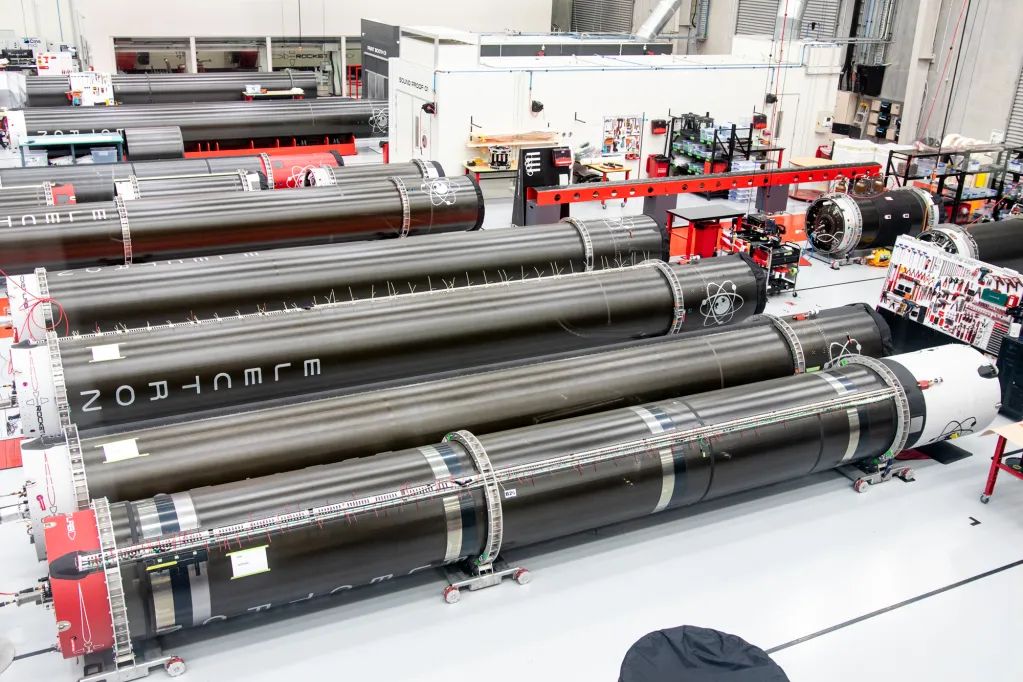
The maiden flight It’s A Test was launched on May 25, 2017, from Rocket Lab’s Launch Complex-1 (LC-1) in New Zealand. On this mission, a failure in the ground communication system occurred, which resulted in the loss of telemetry. Even though the company had to manually terminate the flight, there was no larger issue with the vehicle itself. Since then, Electron has flown a total of 40 times (37 of them were fully successful) and delivered 171 satellites into orbit.
First And Second Stage
| First Stage | Second Stage | |
|---|---|---|
| Engine | 9 Rutherford engines | 1 vacuum optimized Rutherford engine |
| Thrust Per Engine | 24 kN (5,600 lbf) | 25.8 kN (5,800 lbf) |
| Specific Impulse (ISP) | 311 s | 343 s |
Electron’s first stage is composed of linerless common bulkhead tanks for propellant, and an interstage, and powered by nine sea-level Rutherford engines. The second stage also consists of tanks for propellant (~2,000 kg of propellant) and is powered by a single vacuum optimized Rutherford engine. The main difference between these two variations of the Rutherford engine is that the latter has an expanded nozzle that results in improved performance in near-vacuum conditions.
For the Love At First Insight mission, the company introduced an update to the second stage by stretching it by 0.5 m. Moreover, they flew an Autonomous Flight Termination System (AFTS) for the first time.
Rutherford Engine
Rutherford engines are the main propulsion source for Electron and were designed in-house, specifically for this vehicle. They are running on rocket-grade kerosene (RP-1) and liquid oxygen (LOx). There are at least two things about the Rutherford engine that make it stand out.
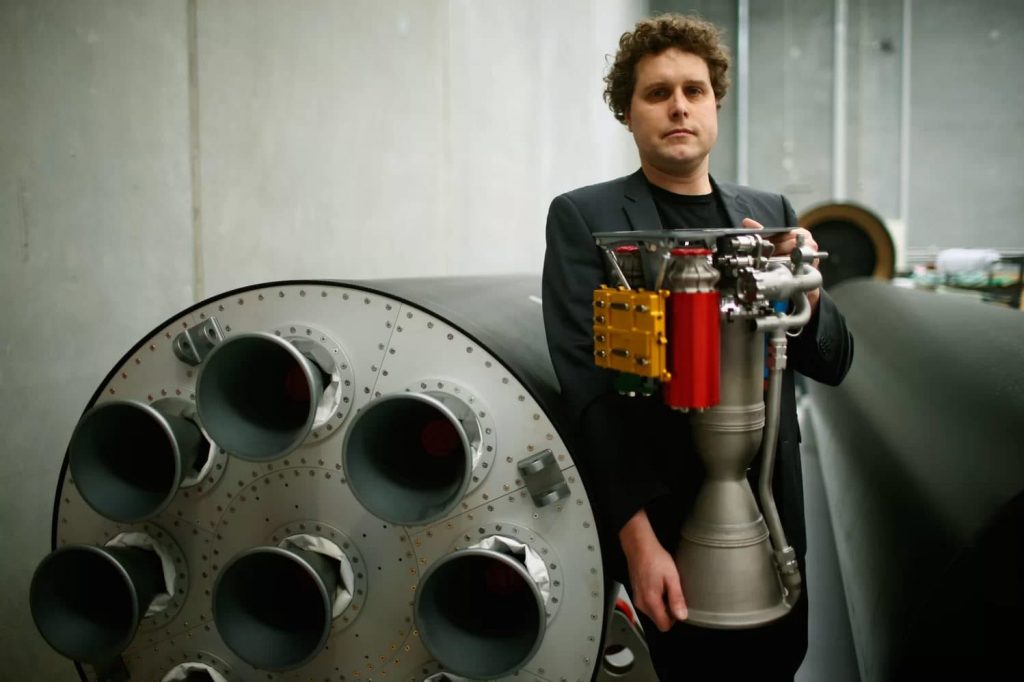
Firstly, all primary components of Rutherford engines are 3D printed. Main propellant valves, injector pumps, and engine chamber are all produced by electron beam melting (EBM), which is one of the variations of 3D printing. This manufacturing method is cost-effective and time-efficient, as it allows to fabricate a full engine in only 24 hours.
Rutherford is the first RP-1/LOx engine that uses electric motors and high-performance lithium polymer batteries to power its propellant pumps. These pumps are crucial components of the engine as they feed the propellants into the combustion chamber, where they ignite and produce thrust. However, the process of transporting liquid fuel and oxidizer into the chamber is not trivial. In a typical gas generator cycle engine, it requires additional fuel and complex turbo-machinery just to drive those pumps. Rocket Lab decided to use battery technology instead, which allowed eliminating a lot of extra hardware without compromising the performance.
Different Third Stages
Kick Stage
Electron has optional third stages, also known as the Kick Stage, Photon, and deep-space version of Photon. The Kick Stage is powered by a single Curie engine that can produce 120 N of thrust. Like Rutherford, it was designed in-house and is fabricated by 3D printing. Apart from the engine, the Kick Stage consists of carbon composite tanks for propellant storage and 6 reaction control thrusters.
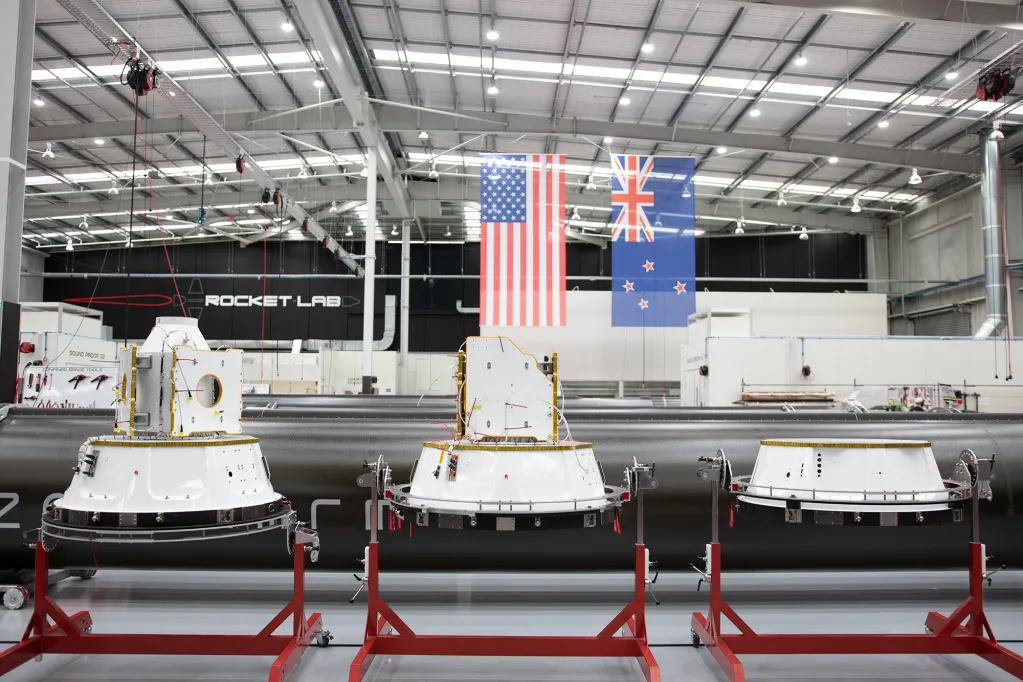
The Kick Stage in its standard configuration serves as in-space propulsion to deploy Rocket Lab’s customers’ payloads to their designated orbits. It has re-light capability, which means that the engine can re-ignite several times to send multiple payloads into different individual orbits. A recent example includes Electron 19th mission, They Go Up So Fast, launched in in 2021. The Curie engine was ignited to circularize the orbit, before deploying a payload to 550 km. Curie then re-lighted to lower the altitude to 450 km, and the remaining payloads were successfully deployed.
Photon And Deep-space Photon
Rocket Lab offers an advanced configuration of the Kick Stage, its Photon satellite bus. Photon can accommodate various payloads and function as a separate operational spacecraft supporting long-term missions. Among the features that it can provide to satellites are power, avionics, propulsion, and communications.
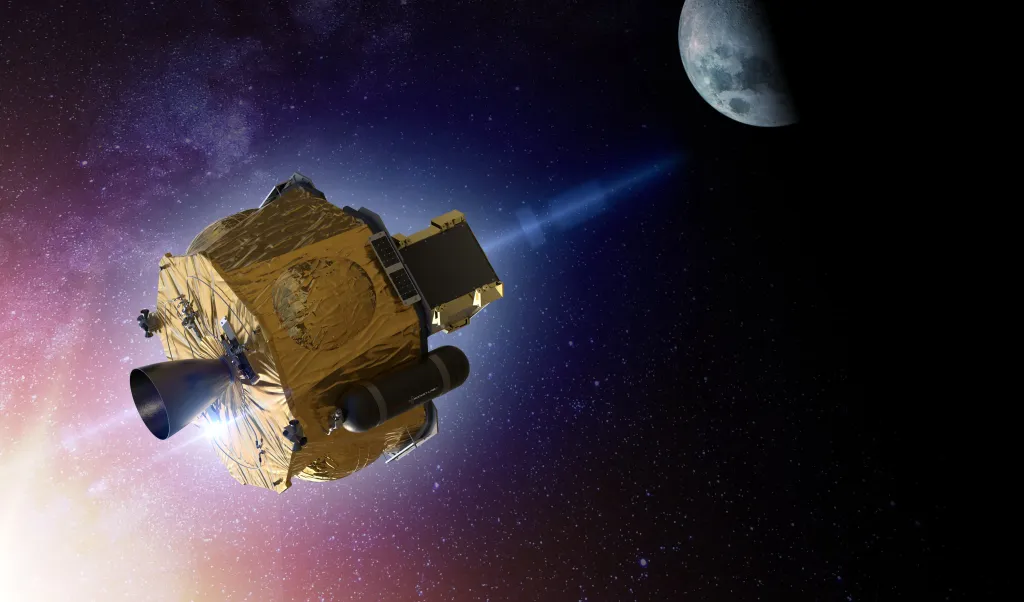
But there is more to it. Photon also comes as a deep-space version that will carry interplanetary missions. It is powered by a HyperCurie engine, an evolution of the Curie engine. The HyperCurie engine is electric pump-fed, so it can use solar cells to charge up the batteries in between burns. It has an extended nozzle to be more efficient than the standard Curie, and runs on some “green hypergolic fuel” that Rocket Lab has not yet disclosed.


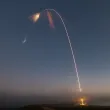

Over 12 hours after launch – this article not updated to say that the launch failed (Just the red bar on the previous launches list).
From the live stream – 2nd stage appeared to ignite then go out. After a few seconds, 2nd stage telemetry (showing deceleration) was slid off the screen.
Description of Electron first stage does not seem to indicate that some (the ones with red bands) are intended to be recoverable. Would be interesting to find out why Rocket Lab did not try to recover this first stage.